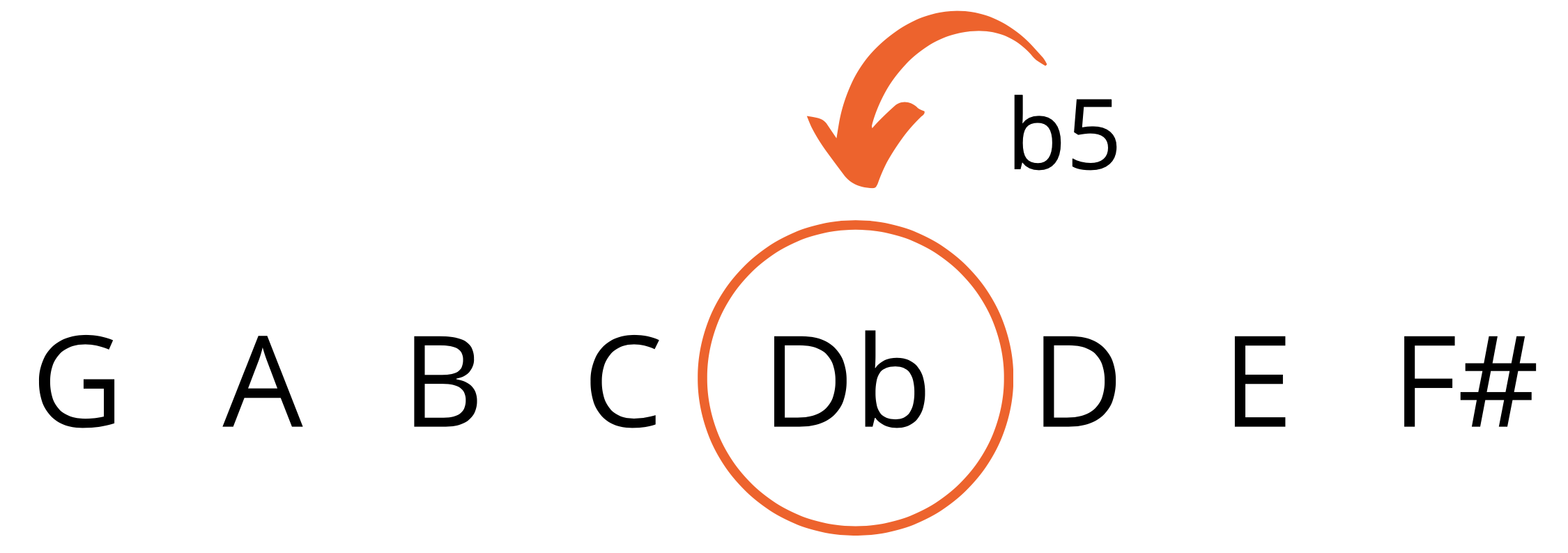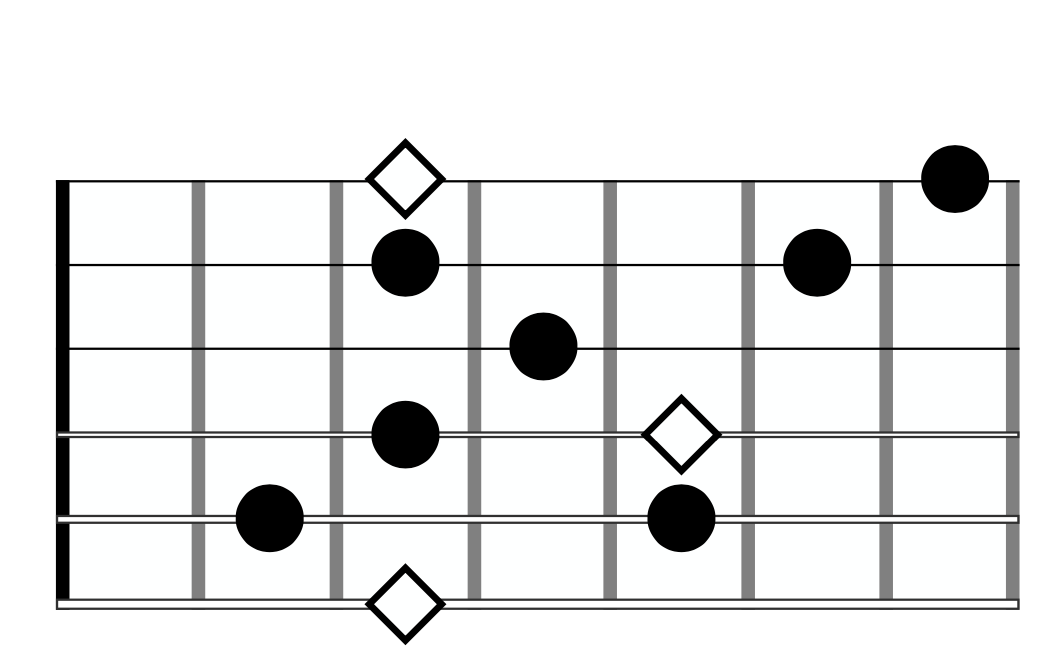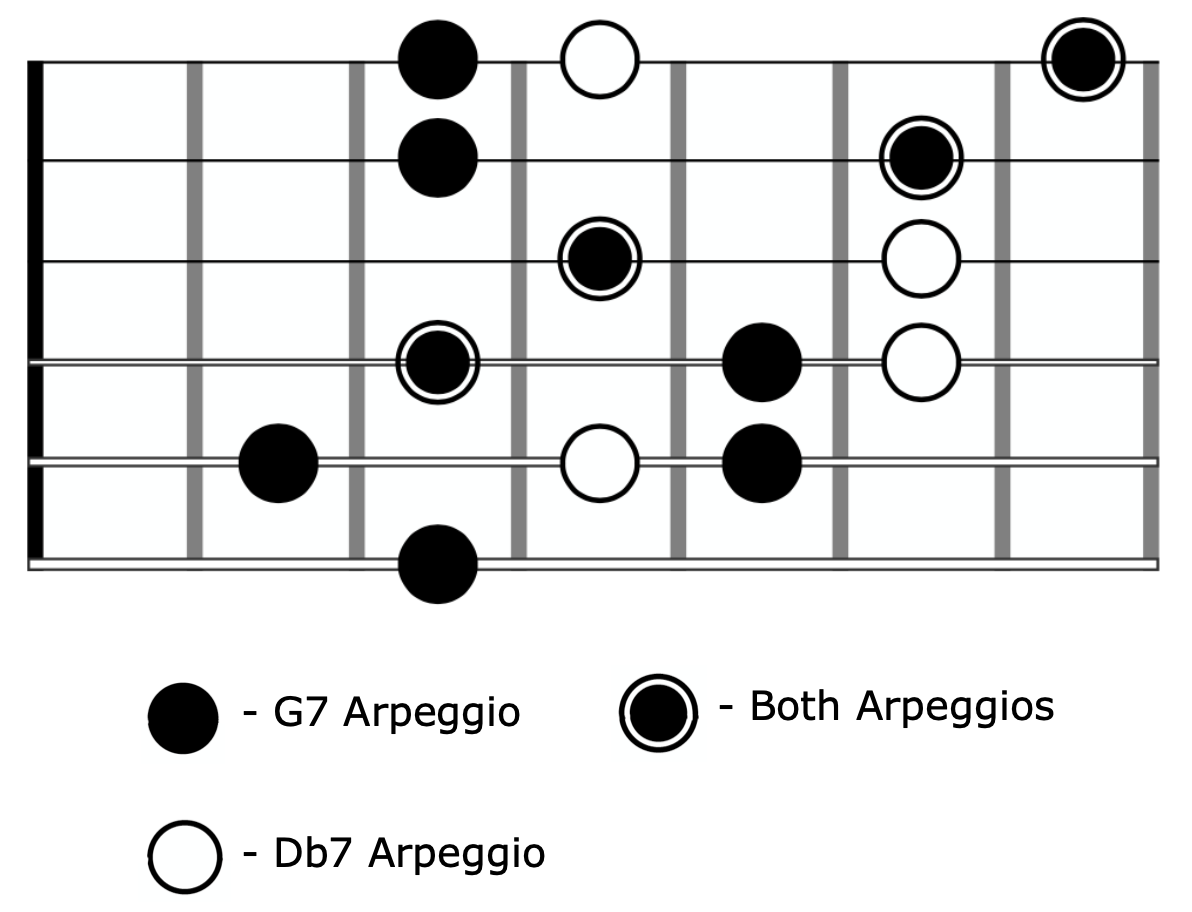Try This Hack For Soloing On Guitar - The Tritone Substitution
by Simon Candy
 In this video, you learn a really cool way to get outside sounds in your guitar solos using the tritone substitution.
In this video, you learn a really cool way to get outside sounds in your guitar solos using the tritone substitution.
This particular approach is a great hack for sounding very advanced with your guitar soloing without needing to know and understand all the theory behind what is happening.
To do this, we will be using a II V I chord progression, which happens to be the most common progression in Jazz music, but common to other styles of music too.
We will play this chord progression in the key of C Major, giving us a Dm7, G7, and C Major7 chord.
Watch the video below to learn how to use the tritone substitution over the II V I progression to create and play advanced sounding solos on your guitar:
The Tritone Substitution
In a nutshell, the tritone substitution is when you take any dominant 7th chord and replace it with another dominant 7 chord that occurs a tritone (b5) away.
For example:
Our chord progression is:

We are going to apply the tritone substitution to the G7 chord in the progression above.
The tritone of G7 is Db7 (b5 above G7)

The Db7 chord/arpeggio contains the following notes:
![]()
These notes relate to the G7 chord in the following way:

This gives you some cool outside sounds when played over the G7 chord and actually implies a G7b5b9 chord.
Arpeggio Shapes
G7:
The following is a common arpeggio shape for a G7 chord:

Db7:
The following is a common arpeggio shape for a Db7 chord:

Arpeggio Exercises
Exercise 1:
This first exercise has you ascending and descending the G7 arpeggio:

Exercise 2:
The second exercise has you ascending and descending the Db7 arpeggio:

Exercise 3:
In this exercise, you ascend the G7 arpeggio and then descend the Db7 arpeggio to begin connecting these two shapes together on the fretboard:

Exercise 4:
Next, you ascend the Db7 arpeggio and then descend the G7 arpeggio to continue connecting these two shapes together:

Arpeggio Overlay Pattern:
To further integrate these two arpeggio shapes together, check out the diagram below where I have overlayed the Db7 arpeggio on top of the G7 arpeggio revealing many different connection points between the two shapes:

Learn how to create and play great solos using arpeggios on guitar